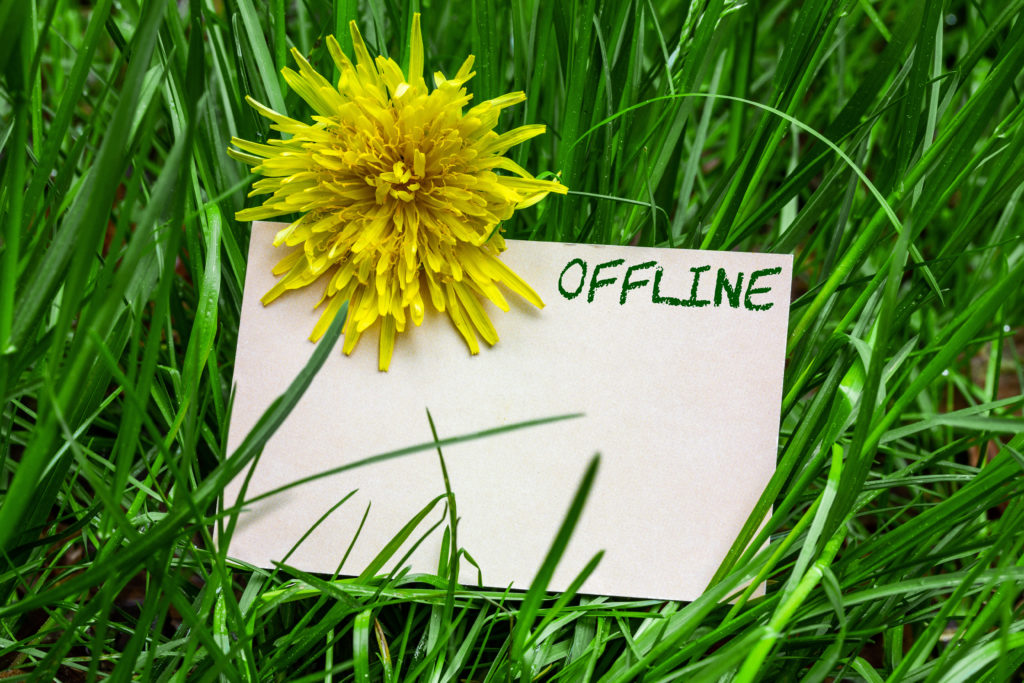
Digital Detox
I took a vacation in the fall of last year and made a commitment to not work at all, and digitally detox as much as possible. I would check my phone in the morning for any emergencies and then put it in the safe, and in the evening I would do the same. I must admit that the first two days I definitely noticed some anxiety and guilt over not working. I reminded myself of the importance of decompressing and refilling my own well, and gratefully those feelings didn’t last long.
Being disconnected from my phone was strangely easy to do, and a little bit of a relief. Giving myself permission to just be fully present, and take in and enjoy being where I was in each moment, was refreshing and liberating. I had no desire to check or post social media. I trusted that if there was an emergency I could be reached, and let my nervous system unwind. It is odd, because I genuinely love my work and love what I do, I am grateful for the relationships in my life and for my home, and yet my stress levels are still palpable and present. It really took a few days before I could sense my system responding to the vacation schedule and rhythm.
I hear from clients all the time that it feels as though the demands of life are significantly more intense and life is moving faster and faster, and I think they are right. The volume of information we have available at all times is unparalleled. The amount of availability that is expected for each person in their professional and personal environments is like nothing ever before, and the effects of technology and social media sites on our nervous systems is profound.
There are a few sides of this I have found eye opening of late:
- EMF effects
- Dopamine and device and social media addiction
EMF stands for electromagnetic field. They are areas of energy that surround electronic devices. Inside your home they can be produced by clock radios, in home wifi, microwaves, cordless telephones, baby monitors and more. Outside the home, they can emit from cell towers, transformers and even your neighbor’s home. There are EMF shields you can find online or at a local hardware store like Home Depot or Lowe’s. There is a correlation between EMF exposure levels and headaches, insomnia, hormone imbalance, tinnitus, DNA damage and cancer. A few of the basic suggestions by Nick Pineault for limiting exposure are:
1) Avoid holding your cell phone to your head (use wired headphones instead).
2) Have your phone on airplane mode as much as possible. This limits how much your phone will emit while it is around you. As long as it is not in airplane mode it is always searching for signal and emitting some EMFs, so having it in airplane mode when possible reduces this.
3) Keep your phone at least one foot away from your body. This distance as a minimum reduces your exposure.
Dopamine is a neurotransmitter produced by the body as a reward chemical. When we accomplish a task, eat something we enjoy, or engage in an activity we enjoy there is a release of dopamine. Dopamine production is involved in most addictive behaviors and substances including sugar. Addictions that utilize a variable reinforcement schedule are among the hardest to recover from, gambling and our smart devices being among these. Many of our current social media platforms were created on a premise of creating dopamine releases and many of our devices elicit these chemical responses. This is problematic because many children and adults are becoming addicted to their phones and social media. It is estimated that at least 50% of Americans have an unhealthy dependence on their devices where it is interfering with their quality of life.
It is becoming more and more important to practice weekly if not daily sessions of digital detox. This includes disengaging from technology for set windows of time on a consistent basis. Give yourself a cut off time at night. This dramatically improves your quality of sleep. Avoid using your cell phone as your alarm clock or sleeping with it near your head. Challenge yourself to reduce your screen time by ½ hour per day. Remember that tv, ipads, tablets, e-readers, laptops, computers and smart phones all qualify as screen time. Take time to visit someplace in nature at least once per month, if not once per week. This could be the beach, a lake, a forest, the mountains, or even a beautiful park nearby. These spaces are lower in exposure and support your body in discharging an accumulation of EMFs. There is also nervous system benefit every time we visit nature.
Our consumption of technology and accompanying EMFs has increased exponentially over the last decade. From our perception it has happened gradually, but it is affecting us none the less. To maintain our health and have a balanced and not depleting relationship with these resources, it is essential to bring mindfulness to our consumption. This is necessary in every part of our lives and the interaction and use of technology is no exception.
I hope to see you sometime soon on a trail, in the ocean or in a practice. Keep raising the bar on self-love through self-care and let your discovery inspire you and those you love!
https://www.psycom.net/cell-phone-internet-addiction
https://www.shieldyourbody.com/2017/10/health-effects-of-5g-networks/
http://sitn.hms.harvard.edu/flash/2018/dopamine-smartphones-battle-time/
https://www.jrseco.com/wp-content/uploads/3-ways-to-use-your-phone-without-zapping-your-health.pdf
